Exploring the Different Types of Marine Searchlights: How Do They Play a Critical Role in Maritime Operations
Navigating the vast expanse of the open seas necessitates accuracy, safety, and dependable equipment. Among the essential tools for maritime exploration, the marine searchlight serves as a beacon, cutting through darkness and bad weather. This article investigates the various types of marine searchlights, shedding light on the variety of these critical roles in maritime operations and how to choose the appropriate type of ship search lights.
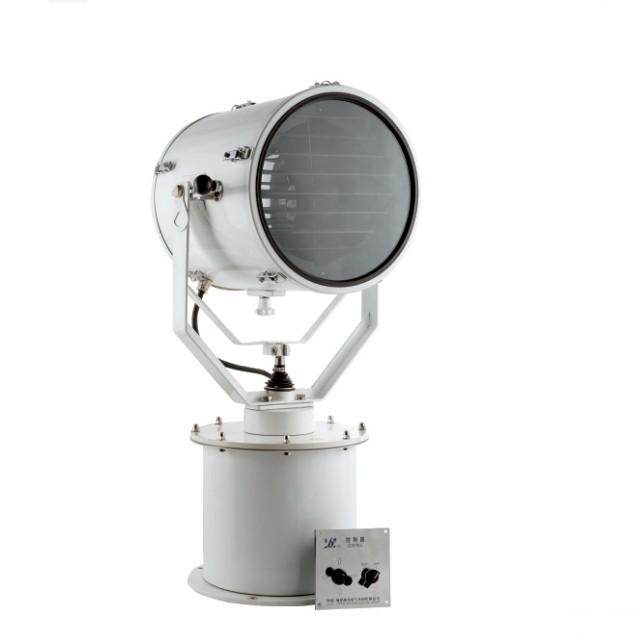
Various Types of Marine Searchlights
There are different types of marine searchlights, each designed for specific applications and operational needs at sea.
1. Spotlights for Precision
Description
Marine spotlights are concentrated, high-intensity lights that project a concentrated beam over a long distance. Spotlights are essential in the maritime context for illuminating specific targets, assisting in navigation, and identifying objects or potential hazards from a distance.
Applications
Navigation: Spotlights assist in guiding vessels through intricate channels and harbors.
Search and Rescue: The focused beam aids search and rescue operations by locating individuals or distressed vessels.
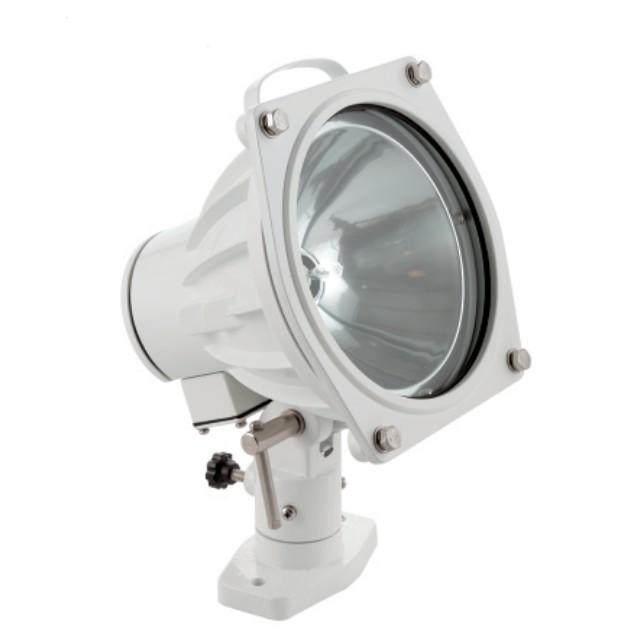
2. Floodlights for Broad Illumination
Description
Explosion-proof floodlights emit a broad, even beam of light that covers a larger area. Floodlights are used in maritime settings when a wide field of vision is required, such as during night operations or when navigating through poorly lit areas.
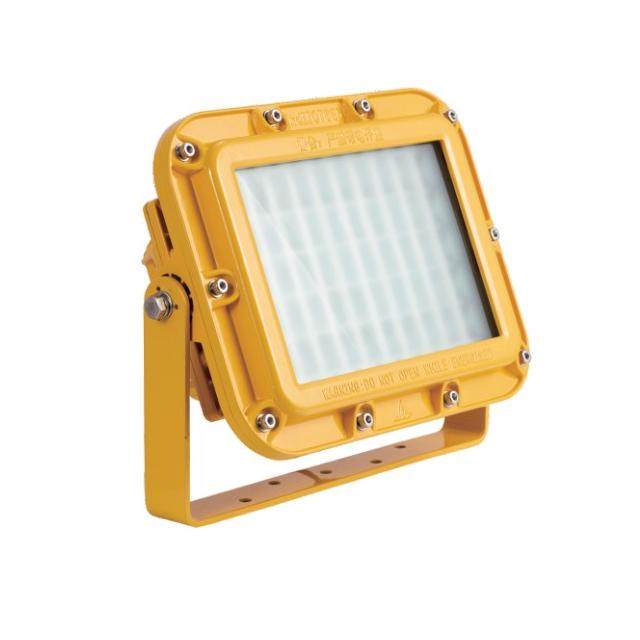
Applications
Deck Lighting: For safe navigation and cargo handling, floodlights illuminate the deck area.
Emergency Response: Floodlights improve visibility in emergency situations.
3. Rotating or Pan-and-Tilt Searchlights
Description
Searchlights that rotate or pan and tilt are dynamic, allowing the light source to move. These searchlights can rotate horizontally, tilt vertically, or perform both movements at the same time, giving them greater versatility.
Applications
Surveillance: Pan-and-tilt searchlights are used for monitoring and surveillance, allowing operators to focus their attention on specific areas.
Security: Because of their ability to move the light beam, these searchlights are useful for security patrols and monitoring.
4. Remote-Controlled Searchlights
Description
Remote-controlled searchlights can be operated from a distance, allowing for greater convenience and flexibility in adjusting the light direction without the need for physical intervention.
Applications
Bridge Lighting: Remote-controlled searchlights help illuminate the ship’s surroundings from the bridge, which aids in navigation and security.
Automated Systems: Integration with automated navigation systems enables real-time data-driven control.
5. Infrared (IR) and Thermal Imaging Searchlights
Description
Infrared and thermal imaging searchlights operate beyond the visible light spectrum, making them effective in low-light conditions or complete darkness. These searchlights detect heat signatures, enhancing visibility.
Applications
Night Vision: IR and thermal imaging searchlights enable night vision capabilities, critical for nocturnal operations.
Security and Surveillance: These searchlights are valuable in monitoring areas without visible light.
6. LED Technology in Marine Searchlights
Description
LED technology has made significant inroads into marine searchlights, offering energy efficiency, durability, and longevity. Marine LED searchlights provide bright illumination with reduced power consumption.
Applications
Energy Efficiency: LED searchlights contribute to energy savings, crucial for vessels operating with limited power resources.
Longevity: The extended lifespan of LED lights reduces maintenance requirements, enhancing reliability.
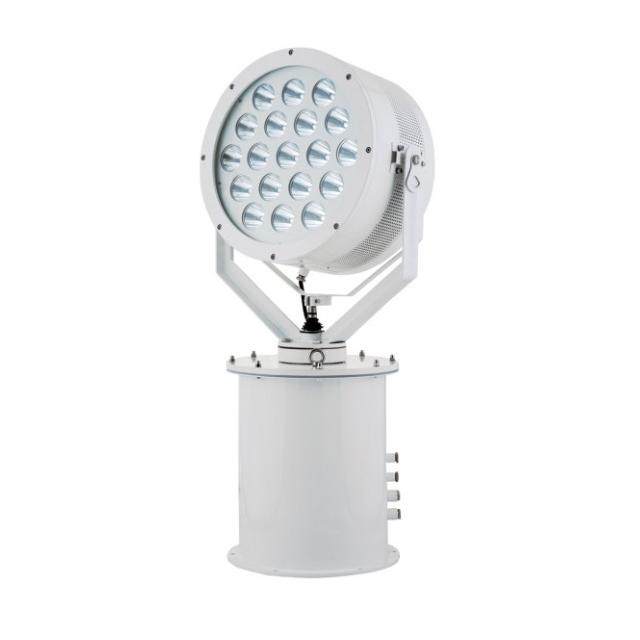
Factors to Consider for Choosing the Suitable Type of Marine Searchlights
The importance of choosing the right type of marine searchlights for ship operators cannot be overstated, given the critical role these lights play in navigation, safety, and emergency response at sea.
1. Purpose and Application
Navigation: Powerful spotlights with a focused beam are essential for vessels navigating through intricate channels and harbors.
Security and Surveillance: For monitoring and patrolling, pan-and-tilt searchlights or remote-controlled options are useful.
Emergency Response: During emergency situations and search and rescue operations, versatile floodlights and infrared (IR) searchlights are critical for visibility.
2. Visibility Requirements
Consider the required range and coverage of the searchlights based on the vessel’s size, intended routes, and operational environment.
Choose spotlights for long-range visibility and floodlights for broader coverage.
3. Light Source and Technology
LED vs. Traditional Bulbs: LED technology is energy-efficient, has a longer lifespan, and provides bright illumination. Consider the advantages of LED searchlights, especially for vessels with limited power resources.
Infrared and Thermal Imaging: For nighttime operations, consider searchlights equipped with infrared or thermal imaging capabilities to enhance visibility in low-light conditions.
4. Movement and Control
Rotating or Pan-and-Tilt: Determine whether the vessel requires searchlights with dynamic movement capabilities for surveillance or targeted illumination.
Remote-Controlled: Remote-controlled searchlights offer convenience and flexibility, allowing operators to adjust the direction of the light from a distance.
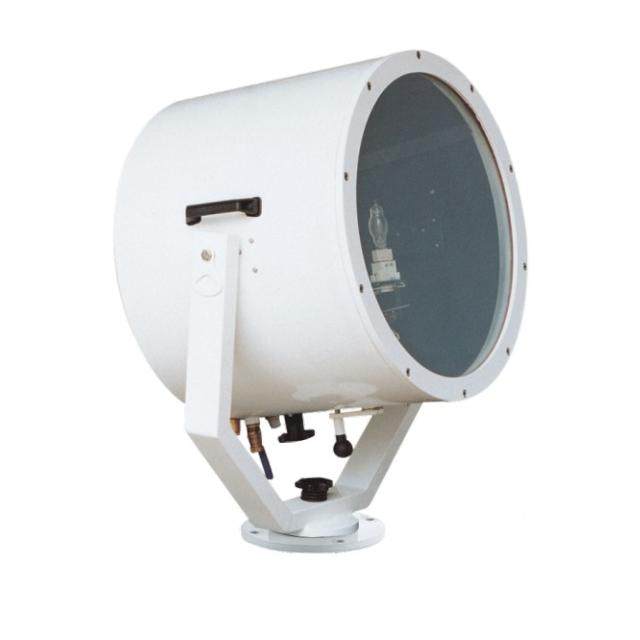
5. Durability and Resistance
Weather Resistance: Choose searchlights designed to withstand harsh marine environments, including resistance to saltwater corrosion, UV exposure, and extreme weather conditions.
Vibration and Shock Resistance: Consider the level of vibration and shock resistance to ensure the searchlights remain operational during rough sea conditions.
6. Regulatory Compliance
Ensure that the selected searchlights comply with relevant maritime regulations and international standards for navigation lights, especially if the vessel operates in international waters.
7. Power Consumption
Evaluate the power consumption of the searchlights, especially for vessels where power resources are limited. LED searchlights are known for their energy efficiency.
8. Integration with Navigation Systems
Consider searchlights that can be seamlessly integrated with the navigation systems of the vessel for automated control and synchronized operation.
9. Ease of Maintenance
Choose searchlights with easily accessible components for routine inspections and repairs.
LED searchlights may reduce the frequency of maintenance tasks due to their longer lifespan.
10. Budget Considerations
Create a budget for the searchlights and balance cost considerations with the features and functionalities that are required.
Consider the long-term costs, such as energy efficiency and maintenance requirements.
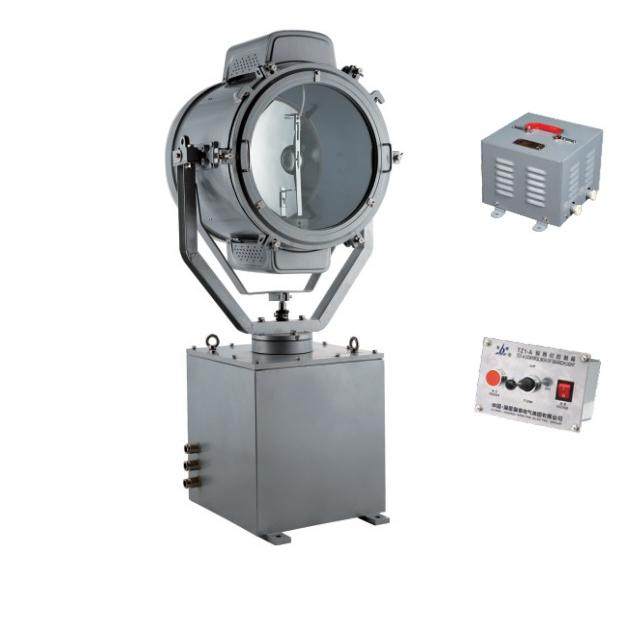
Conclusion
The various types of marine searchlights play critical roles in maritime operations, from guiding ships through treacherous waters to assisting in emergency response and surveillance. Selecting the suitable type of marine searchlight is determined by the vessel’s specific needs, the nature of its operations, and the environmental conditions it encounters.


